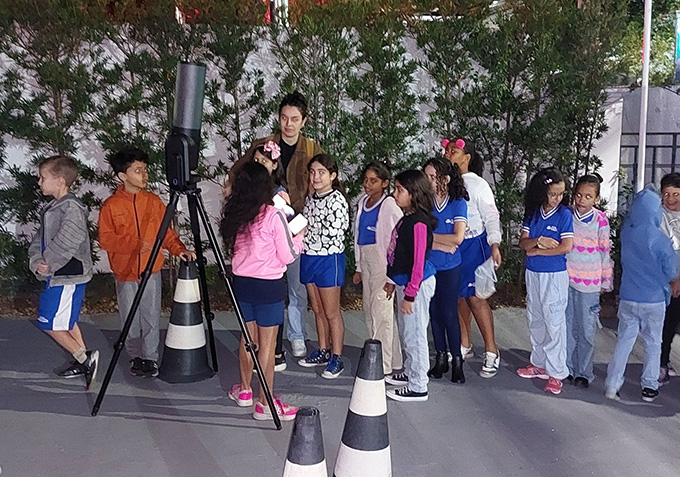In January in Monterrey, Mexico, Iván Venzor was one of just a dozen people in the world to see a possible planet Jupiter in front of a remote star.
It happened very quickly to see with only a long light of light-but the backyard of the Venzor House recorded the data, allowing it to verify the event with the researchers. “I’m dinner with my family, and I’m trying to discover a new type of planet from a few meters out,” says Venzor, a hobby astronomer. “It’S’S’S WITHOUT TRUE.”
The Venzor telescope is part of a growing global network, which enables enthusiasts such as it to contribute to astronomical research. Consisting of over 15,000 small, Wi-Fi-activated telescopes, produced by the French company Unistllar, the network includes six continents and has helped detect hundreds of asteroids, comets and exoplanets. Discoveries rely on occultation – when a considerable object such as an asteroid or planet briefly blocks a star’s light. By measuring the duration of these blockages from numerous places, astronomers can determine the size, shape and trajectory of the object.
The network “is the most delightful project of the citizens of citizens I have ever seen,” says Jon VandeGriff, a spatial physics scientist at the Johns Hopkins Applied Physics Laboratory, MD.
It has allowed researchers to refine predictions for asteroid orbits, contribute to exoplanet studies, and even observe major space missions. In 2022, when NASA intentionally redirected an asteroid by colliding an spacecraft in it, the network helped track waste from the collision.
But telescopes can cost up to $ 4,000 each, making them inaccessible to many. So non -profit and nonprofit including boundless astronomers have donated telescopes to universities and astronomy clubs around the world to expand network extension.
For those communities, the ability to contribute to the science of space is transformative.
Marcelo Souza, an astrophysicist at the Universidade Estadual Do Norte Fluminense Darcy Ribeiro in Rio de Janeiro, received a free telescope for his astronomy club last year. “When we got it, everything changed,” Souza says. The instrument has become a major tool for learning, seeking and extension of astronomy.
In Armenia, an astronomer club led by space engineer Vachik Khachatryan and his brother, Mer, has used his telescope partially donated to the event for over 2,000 children. Vachik even brought him to his wedding.

For those who are interested in contributing to research, Unistllar distributes a list of transient cosmic objects that can be seen in different places each month. After an observer selects their object of interest, they can press an button that drives an app to show the telescope to the target location and record a video of the passing facility. Observers can also use the telescope to take pictures of their favorite nebulatings and galaxies.
At a meeting of the American Geophysical Union in December, the chief of the Unistllar’s scientific official Frank Marchis and the associates reported that the network successfully discovered 136 asteroids. A future letter will detail the discovery of a rare binary asteroid – two spatial rocks rotating one another. Meanwhile, a partnership with NASA is helping to refine orbits of about 20 exoplanets.
The other team limit is using machinery lesson to minimize the fake observations caused by clouds or satellites. And in April, 50 observers will receive hardware prototypes that will allow researchers to operate telescopes remotely, eliminating user error during important transit.
Marchis, who is also a planetary astronomer at the Seti Institute in Mountain View, Calif., Wants to scaling the network by expanding participation in underlying regions such as Africa, Central Asia and South America. This would be a help for researchers and hobbyists alike.
“Yourself, you can only do so much” in astronomy, says Venzor. Working together, “You’re feeling part of something bigger.”
#Citizen #scientists #cosmic #discoveries #global #telescope #network
Image Source : www.sciencenews.org